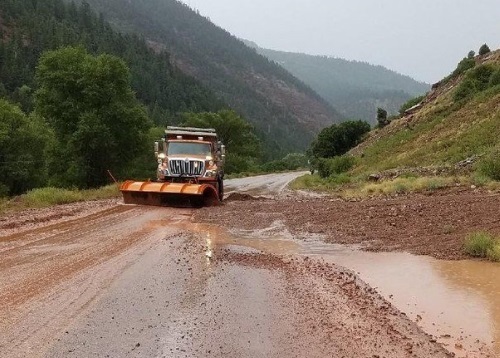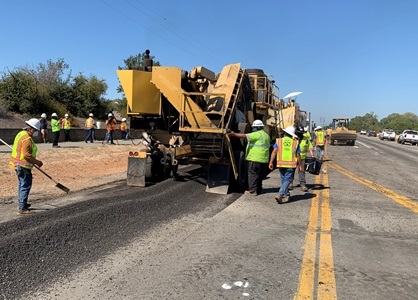A roundup of headlines curated for state transportation environmental professionals
FEDERAL ACTION
COVID-19 Relief Stalls, House Passes THUD Appropriations – AASHTO Journal
New DOJ Guidance Seeks to Limit Federal Enforcement under the Clean Water Act – National Law Review
House Passes New Water Resources Development Bill – Engineering News Record
Senate Democrats introduce environmental justice bill – The Hill
COVID-19
Israel’s ‘smart commuting’ shows what public transport could be like after COVID-19 – World Economic Forum
Transit-Based COVID-19 Monitoring Pilot Launched in Mission District – University of California San Francisco
MTA Announces Installation of Mask Dispensers Inside Buses for Customers to Easily Access Masks When Boarding – MTA (Press release)
G7 High-Level Transportation Principles in Response to COVID-19 – US Department of State
There Is Little Evidence That Mass Transit Poses a Risk of Coronavirus Outbreaks – Scientific American
COVID-19 AND TRANSPORTATION CONSTRUCTION Part 8: Lessons Learned – Getting Prepared for Possible Stimulus Funding – Roads and Bridges
COVID-19 and the Future of Transportation in California – JD Supra
INFRASTRUCTURE RESILIENCE AND SUSTAINABILITY
Caltrans Repaves Roadway with Recycled Plastic Bottles – Caltrans (Press release)
Pritzker administration announces $250 Million in infrastructure grants to Illinois counties, municipalities and townships – Illinois DOT (Press release)
AIR QUALITY
California’s Air Pollution Cops Are Eyeing Uber and Lyft – Wired
Los Angeles Accelerates Efforts to Electrify Its Infamous Traffic – Scientific American
ENVIRONMENTAL JUSTICE
‘Who’s this for?’: Without looking at Richmond’s racial disparities, some worry push for ‘open streets’ could widen inequities – Richmond Times-Dispatch
Pollution Is Killing Black Americans. This Community Fought Back. – New York Times
NATURAL RESOURCES
New port brings tourism hope and pollution fears to Alaskan town – Thomson Reuters Foundation
CULTURAL RESOURCES
Why Historic Preservation Needs a New Approach – CityLab
HEALTH AND HUMAN ENVIRONMENT/ACTIVE TRANSPORTATION
Revel is shutting down its NYC moped service after another death – CBS News
New Orleans mayor releases updated plan on making French Quarter pedestrian-focused – WDSU-TV
Shared-use roads improve physical distancing, research shows – University of Alberta
From ‘smart mobility hubs’ to crowdsourcing traffic data, Columbus tests new transportation tech – Statescoop
SamTrans Launches Ride Now Taxi Subsidy Pilot Program – SamTrans (Press release)
Electrifying transportation will jumpstart the U.S. economy and protect public health – The Hill (Opinion)
Lyft seeks to ease return-to-work woe with custom ride-share benefit – HR Dive
Mineta Transportation Institute releases study showing carpooling for cash could help clear congestion – Mineta Transportation Institute
TRB RESOURCES/ANNOUNCEMENTS
A Guide to Emergency Management at State Transportation Agencies – TRB
Developing a Guide to Emergency Management at State Transportation Agencies – TRB
Arizona DOT’s Approach to Virtual Public Involvement – AASHTO’s ETAP Podcast
U.S. Department of Transportation Announces Nearly $5 Million to 4 New University Transportation Centers – USDOT (Press Release)
Two AASHTO Management Courses to go Virtual– AASHTO
FEDERAL REGISTER NOTICES
Non-Traditional and Emerging Transportation Technology Council – USDOT (Request for comment)
Discretionary Funding Opportunity: Grants for Pilot Program for Expedited Project Delivery – FTA (Notice of funding opportunity)
Environmental Impact Statements; Availability, etc.: Jefferson National Forest; Monroe County, West Virginia; Giles and Montgomery County, Virginia; Mountain Valley Pipeline and Equitrans Expansion Project – EPA (Notice of intent to prepare a supplemental environmental impact statement)


